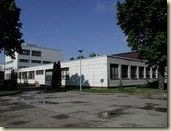Swimmingly, as it happens, since, like France, Lithuania gets almost three-quarters of its electricity from nuclear energy. Slovakia gets a little over half and Bulgaria between a third and a half. Add to these Hungary and the Czech Republic among those who fulfill more of their electricity needs via nuclear energy than does the United States. These tidbits, and more, can be found at Reuters Factbox about nuclear energy in central and southeastern Europe (meaning former Soviet satellites and Turkey.)
While one may retain an image of the bad old days in those countries as gray industrial sumpholes, nuclear plants did not contribute to the smog of Budapest nor rip up pristine Baltic landscapes. Consequently, most of these countries are extending the life of their current plants and planning more. Neighbors that hadn’t any plants, like Albania, are now on board. Only the Czechs (with the Green Party as part of the governing coalition) are hesitating, but we’ll see what happens there after the next elections. A few links for the curious:
Introduction to the Slovak Nuclear Society
The Lithuanian International Nuclear Safety Center
Institute of Nuclear Research (Hungary)
Picture of the Hungarian institute. Well, it certainly has that look the world came to know and love in the Soviet bloc days – 70s suburban jail. Personality not desired.

Comments
The only fossil fuel they have (in Estonia) is oil shale. Their main potential gas source is Russia, a country whom none of them trust very much. All the hydro potential is pretty much tapped, I believe, and solar isn't going to work very well at their latitude.
Given all that, nuclear power is a pretty attractive option.